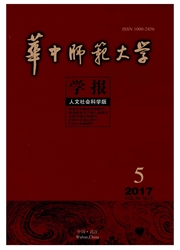

 中文摘要:
中文摘要:
具身认知强调身体感觉经验在概念形成和理解过程中的作用。概念符号的含义是建立在身体感觉运动经验基础上的。形象性概念学习过程中建立了感觉通道与运动脑区的特异性联结;抽象动词通过隐喻的方式,用较为熟悉的身体感觉经验映射和理解较为复杂的抽象概念。脑成像研究表明,动词语义理解与前运动皮层和主运动脑区存在特异性的对应关系,动作语义理解是具身的,大脑镜像神经系统和运动脑区模拟了概念中的动作,实现了动作语义的通达。从这个意义上说,语言的理解没有超越身体的物理经验,心理和身体是统一的。
 英文摘要:
英文摘要:
Embodied cognition emphasizes the role of our body sensory-motor experience on conception representation and procession. Conceptual symbol system also supports that concept meanings are built from sensory-motor experiences. Concrete conceptual symbol is represented through sensory modal and motor cortex; abstract conception is constituted metaphorically by concrete sensory-motor experience. A large body of evidence has shown that comprehension of action verbs elicits activation in the sensory- motor system in a somatotopic manner, which demonstrates that the semantic comprehension is embodied. The evidence coming from neuroimaging research shows that the mirror neuron and motor cortex simulates the action assimilate into the verb and sentence. In this sense, we conclude language comprehension is based on our physical body experience.
 同期刊论文项目
同期刊论文项目
 同项目期刊论文
同项目期刊论文
 期刊信息
期刊信息
